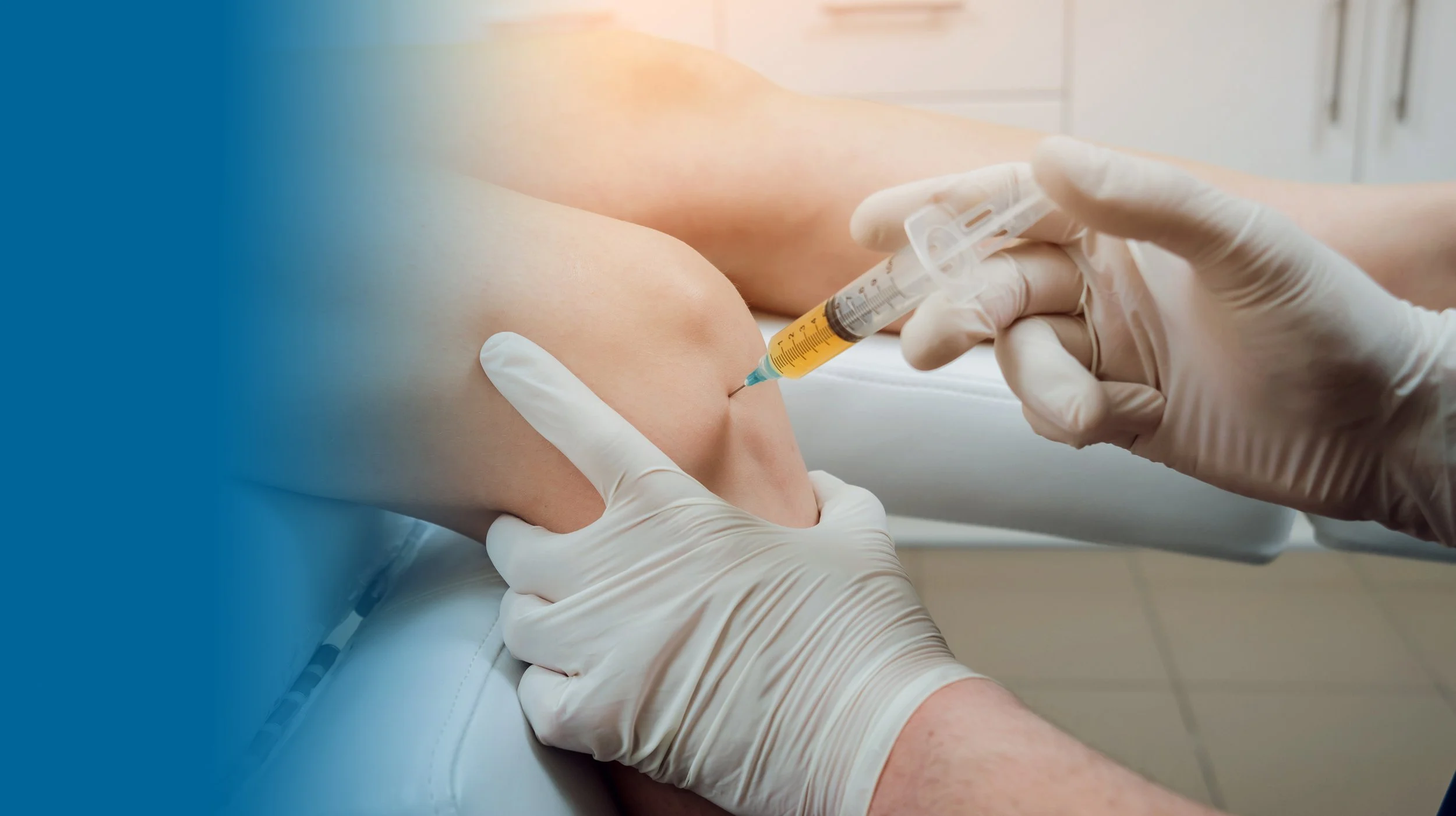
Platelet Rich Plasma
What is Platelet-Rich Plasma (PRP)?
Platelet-Rich Plasma Therapy (PRP) is an advanced, non-surgical treatment designed to accelerate healing and relieve chronic pain caused by tendon injuries, osteoarthritis, and other soft tissue damage. By harnessing platelets and growth factors from your own blood, PRP jump-starts your body’s natural repair processes exactly where you need them most.
One of the major advantages of PRP is that it’s performed right in the exam room and typically takes under an hour. After a quick blood draw, your sample is processed in a centrifuge to isolate the most potent platelets. While this is prepared, your APG provider uses high-resolution ultrasound imaging to pinpoint the damaged tissue. Guided by real-time imaging, the concentrated PRP is precisely injected into the injured area to stimulate rapid, targeted regeneration.
PRP Q & A
What exactly is PRP?
PRP is a super-concentrated component of your own blood, rich in growth factors that actively promote the repair of tendons, ligaments, cartilage, and muscles. While your bloodstream naturally carries platelets throughout your body, the concentration is too low to trigger substantial healing in chronic or severe injuries.
By extracting and concentrating these platelets, then delivering them directly into damaged tissue, PRP provides an amplified regenerative response that wouldn’t happen on its own. Whether you’re recovering from an acute injury, managing long-standing pain, or an athlete striving to return to peak performance, PRP offers a powerful solution without the need for surgery.
How does the PRP process work?
Your APG provider draws a small vial of blood—similar to a routine lab test. This blood is spun at high speed in a centrifuge to separate its components. The red blood cells are removed, leaving behind the golden plasma packed with healing platelets.
Using precision ultrasound or fluoroscopic guidance, your provider injects this concentrated PRP directly into the exact site of injury. This accuracy ensures the maximum regenerative impact where it matters most.
Can I have an allergic reaction to PRP?
No. Because PRP is derived entirely from your own blood, there is no risk of allergic reaction or rejection. The procedure is safe, minimally invasive, and performed under strict sterile conditions to virtually eliminate any risk of infection.
What can I expect after PRP therapy?
Most patients experience noticeable improvement—less pain, better mobility—within 4–6 weeks. The regenerative benefits often continue to build over several months and may last up to a year or longer.
What Types of Injuries Benefit from PRP?
PRP has been shown to be effective in treating a wide range of musculoskeletal conditions, including:
Chronic tendon injuries (tennis elbow, golfer’s elbow, Achilles tendinopathy)
Rotator cuff tears
Plantar fasciitis
Mild to moderate knee osteoarthritis
Ligament sprains and partial tears
Muscle strains
Hip labral tears
Patellar tendinitis (jumper’s knee)
Degenerative joint pain
Overuse injuries in athletes
If you’re unsure whether PRP is appropriate for your condition, your APG provider will evaluate your medical history, perform an examination, and recommend the best course of treatment.
Enhance Your Results: PRP + Alternative to Knee Replacement Program
PRP therapy can be seamlessly integrated into our Alternative to Knee Replacement Program, which combines innovative regenerative treatments with evidence-based supplementation to help restore joint health naturally. When paired with our proprietary disco supplementation protocols designed to support cartilage, reduce inflammation, and improve joint mobility, PRP provides an even more comprehensive approach to knee pain relief.
This powerful combination is ideal for patients seeking to delay or avoid knee replacement surgery while maximizing their body’s capacity to heal.
Payment & Insurance Information
Please note that PRP therapy is a cash-based treatment and is not covered by insurance. Our team will review all costs with you in advance so you can make an informed decision with no surprises.
Get more information or request an appointment.
Call 888-363-8333 or fill out the form below and a member of our staff will contact you within 24 business hours.
